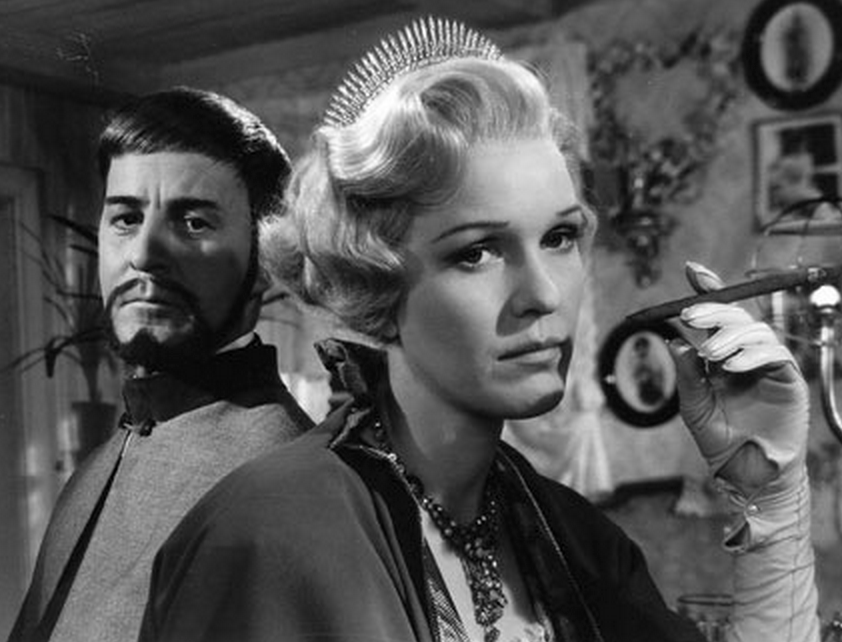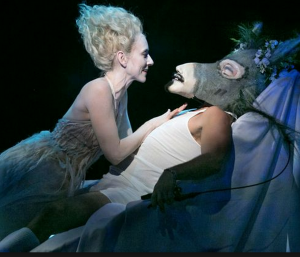 It’s that time of year, at least in the Northern Hemisphere. The days are long, the weather is glorious, and gardens are overflowing with bounty that hasn’t yet over-ripened on the vine. In short, it’s A Midsummer Night’s Dream time, that moment in the year that inspired Shakespeare’s most joyously subversive comedy. About four Athenian lovers, six amateur stage actors, and the fairies who control them during a magical night in a forest, Midsummer is an oft-quoted yet oddly underestimated meta-play about the intersection of romance, gender, identity, power, performance, and fate – ideal fodder for Hollywood adaptations, in other words, though the quality of those adaptations is markedly uneven. Here’s our oh-so-subjective list of the best Midsummer-inspired films; suffice it to say it doesn’t include the hamfisted 1999 adaptation starring a deer-in-the-headlights Calista Flockart, the 2001 “10 Things I Hate About You” knockoff “Get Over It,” or this winter’s buffoonishly wrongheaded “Strange Magic.”
It’s that time of year, at least in the Northern Hemisphere. The days are long, the weather is glorious, and gardens are overflowing with bounty that hasn’t yet over-ripened on the vine. In short, it’s A Midsummer Night’s Dream time, that moment in the year that inspired Shakespeare’s most joyously subversive comedy. About four Athenian lovers, six amateur stage actors, and the fairies who control them during a magical night in a forest, Midsummer is an oft-quoted yet oddly underestimated meta-play about the intersection of romance, gender, identity, power, performance, and fate – ideal fodder for Hollywood adaptations, in other words, though the quality of those adaptations is markedly uneven. Here’s our oh-so-subjective list of the best Midsummer-inspired films; suffice it to say it doesn’t include the hamfisted 1999 adaptation starring a deer-in-the-headlights Calista Flockart, the 2001 “10 Things I Hate About You” knockoff “Get Over It,” or this winter’s buffoonishly wrongheaded “Strange Magic.”
“A Midsummer Night’s Dream” (1935)
Made when the novelty of cinema seemed magical in and of itself, this deliciously blowsy “Midsummer” was transferred to screen from director Max Reinhardt’s own Hollywood Bowl stage production. The cast is jaw-dropping, if also a bit of a head-scratcher: Olivia De Havilland as lover Hermia is positively swoony but Mickey Rooney as rapscallion Puck and James Cagney as Bottom, the blowhard actor who’s transformed into a donkey, is a stretch; Rooney’s class clown shtick loses something in translation and gangster Cagney barely tolerates the indignities of his role. (Warner Brothers’ roster of contracted actors had significantly less say-so back then.) Even now, though, the score, fairy sequences, and photography are so impressive that the Bard’s charm endures.
“Smiles of a Summer Night” (1955)
Loose adaptation though it may be, Ingmar Bergman’s erotic comedy nonetheless takes its cues from A Midsummer Night’s Dream. Shot in a voluptuous black and white, it stars screen legends Gunnar Björnstrand and Harriet Andersson and is based in turn-of-the-century Sweden, where four couples bicker gently – and then not-so-gently – over the course of one weekend in the country. Witty, sweetly melancholic, and searingly honest, it is Bergman at his most, well, Bergman. That’s a great thing, to be clear.
“A Midsummer Night’s Sex Comedy” (1982)
Woody Allen has always been a merrily derivative filmmaker but during his mid-career he was most overtly influenced by Ingmar Bergman; he even occasionally collaborated with Bergman’s longtime cinematographer Sven Nykvist. Here, the late, great Gordon Willis photographs his take on A Midsummer Night’s Dream as filtered through “Smiles of a Summer Night.” Allen stars as a turn-of-the-century inventor whose marriage to Mary Steenburgen has lost its sizzle. Over the course of one weekend at their country house, all kinds of mischief ensues with their flock of houseguests, including Allen staples Tony Roberts and a slyly dreamy Mia Farrow as a semi-recovered nymphomaniac. Gorgeous and whimsical, this is one of Allen’s more amicable comedies.
“Were the World Mine” (2008)
This innovative indie musical is set in a tony private school at which an out gay student cast as Puck in a production of “A Midsummer Night’s Dream” discovers a mysterious potion that instills everyone – from the homophobic jocks to the school principal – with same-sex desire. The script is a little clunky but the choreography, rock-opera score, and direction (from newcomer Tom Gustafson) is imaginative and lavish; this film deserves far more love than it ever received.
“A Midsummer Night’s Dream” (2014)
 As Lysander says, the course of true love never did run smooth. Ditto for Julie Taymor’s career. After the Broadway disaster of her “Spider-Man: Turn Off the Dark,” this film of her spectacular 2013 “Midsummer” theater production was granted a mere one-day theatrical release. That’s too bad, because this is her first cinematic effort that captures the unmitigated genius of her stagework. Starring character actor Max Casella as Bottom and rubber-limbed Kathryn Hunter as the most punkish of Pucks, this “Midsummer” channels a kinetic grace that is captured ably by cinematographer Rodrigo Prieto. By placing his camera right on stage (we can see close-ups of reaction shots, including Casella working his donkey mask), we’re offered the best of cinema and live theater all at once.
As Lysander says, the course of true love never did run smooth. Ditto for Julie Taymor’s career. After the Broadway disaster of her “Spider-Man: Turn Off the Dark,” this film of her spectacular 2013 “Midsummer” theater production was granted a mere one-day theatrical release. That’s too bad, because this is her first cinematic effort that captures the unmitigated genius of her stagework. Starring character actor Max Casella as Bottom and rubber-limbed Kathryn Hunter as the most punkish of Pucks, this “Midsummer” channels a kinetic grace that is captured ably by cinematographer Rodrigo Prieto. By placing his camera right on stage (we can see close-ups of reaction shots, including Casella working his donkey mask), we’re offered the best of cinema and live theater all at once.
This was originally published in Word and Film.
